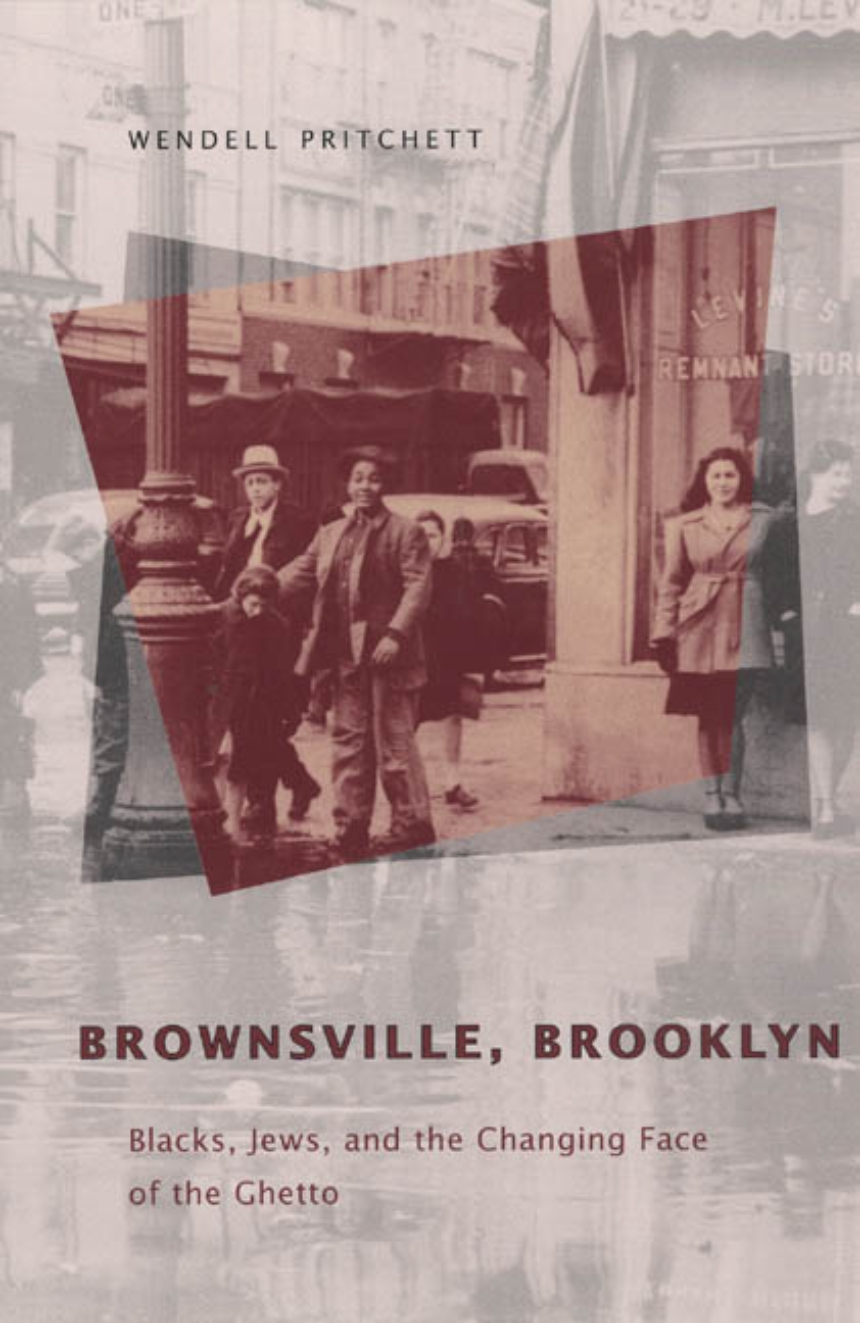Brownsville, Brooklyn
Blacks, Jews, and the Changing Face of the Ghetto
From its founding in the late 1800s through the 1950s, Brownsville, a section of eastern Brooklyn, was a white, predominantly Jewish, working-class neighborhood. The famous New York district nurtured the aspirations of thousands of upwardly mobile Americans while the infamous gangsters of Murder, Incorporated controlled its streets. But during the 1960s, Brownsville was stigmatized as a black and Latino ghetto, a neighborhood with one of the city’s highest crime rates. Home to the largest concentration of public housing units in the city, Brownsville came to be viewed as emblematic of urban decline. And yet, at the same time, the neighborhood still supported a wide variety of grass-roots movements for social change.
The story of these two different, but in many ways similar, Brownsvilles is compellingly told in this probing new work. Focusing on the interaction of Brownsville residents with New York’s political and institutional elites, Wendell Pritchett shows how the profound economic and social changes of post-World War II America affected the area. He covers a number of pivotal episodes in Brownsville’s history as well: the rise and fall of interracial organizations, the struggles to deal with deteriorating housing, and the battles over local schools that culminated in the famous 1968 Teachers Strike. Far from just a cautionary tale of failed policies and institutional neglect, the story of Brownsville’s transformation, he finds, is one of mutual struggle and frustrated cooperation among whites, blacks, and Latinos.
Ultimately, Brownsville, Brooklyn reminds us how working-class neighborhoods have played, and continue to play, a central role in American history. It is a story that needs to be read by all those concerned with the many challenges facing America’s cities today.
The story of these two different, but in many ways similar, Brownsvilles is compellingly told in this probing new work. Focusing on the interaction of Brownsville residents with New York’s political and institutional elites, Wendell Pritchett shows how the profound economic and social changes of post-World War II America affected the area. He covers a number of pivotal episodes in Brownsville’s history as well: the rise and fall of interracial organizations, the struggles to deal with deteriorating housing, and the battles over local schools that culminated in the famous 1968 Teachers Strike. Far from just a cautionary tale of failed policies and institutional neglect, the story of Brownsville’s transformation, he finds, is one of mutual struggle and frustrated cooperation among whites, blacks, and Latinos.
Ultimately, Brownsville, Brooklyn reminds us how working-class neighborhoods have played, and continue to play, a central role in American history. It is a story that needs to be read by all those concerned with the many challenges facing America’s cities today.
340 pages | 28 halftones, 3 maps, 10 tables | 6 x 9 | © 2003
Historical Studies of Urban America
Geography: Urban Geography
History: American History, Urban History
Political Science: Urban Politics
Sociology: Urban and Rural Sociology
Table of Contents
List of Illustrations
Acknowledgments
Introduction
1. Building an Immigrant Mecca: Brownsville, 1880-1940
2. The Optimistic Years: Brownsville in the Forties
3. Blacks and Whites in the Optimistic Years
4. Activism and Change: Brownsville, 1950-1957
5. Racial Change in a Progressive Neighborhood, 1957-1965
6. A Northern Civil Rights Movement: The Beth-El Hospital Strike of 1962
7. The Brownsville Community Council: The War on Poverty in Brownsville, 1964-1968
8. The Ocean Hill-Brownsville Community and the 1968 Teacher’s Strike
9. A Modern Ghetto? Brownsville since 1970
Epilogue
Notes
Index
Acknowledgments
Introduction
1. Building an Immigrant Mecca: Brownsville, 1880-1940
2. The Optimistic Years: Brownsville in the Forties
3. Blacks and Whites in the Optimistic Years
4. Activism and Change: Brownsville, 1950-1957
5. Racial Change in a Progressive Neighborhood, 1957-1965
6. A Northern Civil Rights Movement: The Beth-El Hospital Strike of 1962
7. The Brownsville Community Council: The War on Poverty in Brownsville, 1964-1968
8. The Ocean Hill-Brownsville Community and the 1968 Teacher’s Strike
9. A Modern Ghetto? Brownsville since 1970
Epilogue
Notes
Index
